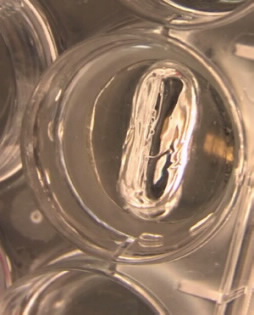FOR IMMEDIATE RELEASE | May 24, 2012
Healing the voice: New American Chemical Society video on synthetic vocal cords
WASHINGTON, May 24, 2012 — An effort to develop synthetic vocal cords to heal the voices of people with scarred natural vocal tissues is the topic of the latest episode of the American Chemical Society’s (ACS’) Bytesize Science series. The video is available at www.BytesizeScience.com.
Filmed in the lab of 2012 ACS Priestley Medalist and David H. Koch Institute Professor Robert S. Langer, Ph.D., at the Massachusetts Institute of Technology, the video highlights the development of a flexible polymer material that mimics the traits of human vocal cords. The video begins with a segment on Julie Andrews, who lost her singing voice in 1997 following surgery to remove noncancerous lesions from her vocal cords. In collaboration with Steven M. Zeitels, M.D., professor of laryngeal surgery at Harvard Medical School, Langer and Harvard Instructor of Surgery Sandeep S. Karajanagi, Ph.D., developed a polymer that mimics the vibration of human vocal cords. In the video, Karajanagi explains that injections of this polymer may restore pliability and function to stiff, scarred vocal cord tissue.
Media Contact
Michael Bernstein
202-872-6042
m_bernstein@acs.org
Michael Woods
202-872-6293
m_woods@acs.org
For additional entertaining video podcasts from ACS, go to www.bytesizescience.com. The Bytesize Science series is produced by the ACS Office of Public Affairs.
For more entertaining, informative science videos and podcasts from the ACS Office of Public Affairs, view Prized Science, Spellbound, Science Elements and Global Challenges/Chemistry Solutions.
To automatically receive news releases from the American Chemical Society contact newsroom@acs.org.
###

Langer’s lab mimic the “fluttering” action of real
human vocal cords.

